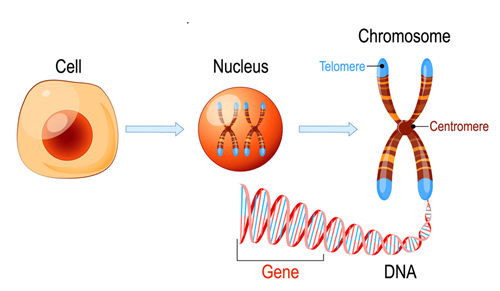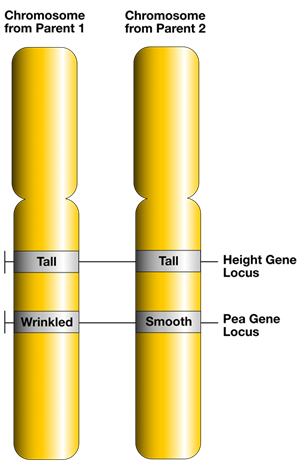
PUMPA - SMART LEARNING
எங்கள் ஆசிரியர்களுடன் 1-ஆன்-1 ஆலோசனை நேரத்தைப் பெறுங்கள். டாப்பர் ஆவதற்கு நாங்கள் பயிற்சி அளிப்போம்
Book Free DemoIn \(1865\), Mendel published his theory of heredity through his experiments in plant hybridisation. Since Mendel's theory do not have any scientific support, it remained unrecognised for decades.
Today, we know that chromosomes present in the nucleus are the carrier of genetic material. Mendel called the genetic material as factors, and they contain the heredity information.
Thirty-five years after Mendel's publications, Walter Sutton's chromosomal observations in cell divisions and gamete development were consistent with Mendel's finding and underlined Mendel's work's significance. This establishment formed the basis for the theory of chromosomes.
German anatomist Walther Flemming had recognised and explored the network of fibres within the nucleus, which he called chromatin or "sustainable materials". Inside cells, this chromatin is in folds, and these characteristic formations of folds are called chromosomes. Thus, Walther Flemming discovered chromosomes, and later, in \(1888\), Heinrich Waldeyer coined the term chromosomes.
Like all other organisms, human beings consist of billions of cells. At the time of fertilisation, we all begin as one cell. All genes are copied when each cell divides so that each new cell has a complete set of genetic materials: i.e., the genome. The human genome has been considered the "book of life," containing all the necessary instructions to build a human being.
The nucleus of each cell contains thin thread-like structures called chromosomes. Waldeyer first coined the term 'chromosomes' in \(1888\).
Important!
Except for RBCs, chromosomes are found in the nucleus of all body cells. Red blood cells have no nucleus and therefore do not contain chromosomes.
Chromosomes contain heredity information and are the carrier of the genetic material. Chromosomes are folds of chromatin fibres packed with DNA and proteins that form the genetic material.
Genes are segments of DNA. It is the fundamental unit of heredity because they are responsible for inheriting a particular phenotypic character.

Picture showing the location of the gene inside a cell
As we already learned in the previous topic, the presence of genes was first proposed by Mendel in \(1865\). He called it a factor. Johansson coined the word gene in \(1909\).
A gene is defined as "a segment of DNA nucleotide base pairs and code for a specific polypeptide chain."

Gene locus
Each gene is located on a chromosome at a location known as its locus. The genetic information contained in the genes is transmitted from one generation to the next during cell division. It is an expression of a specific character. It is a unit of mutation.
A video explains the chromosome, DNA and gene